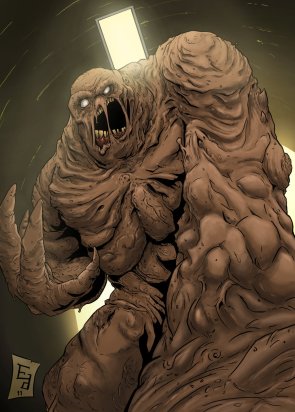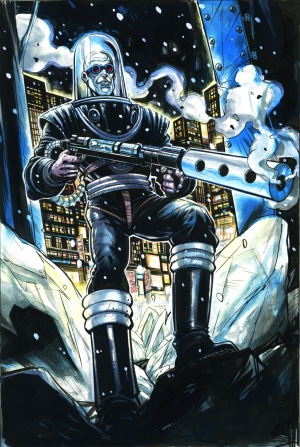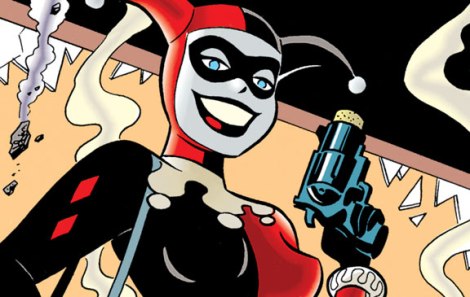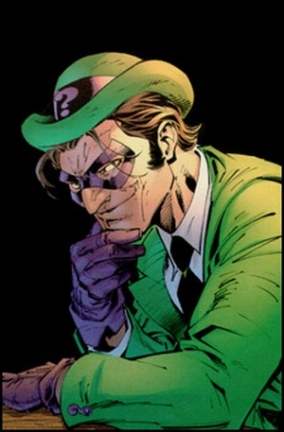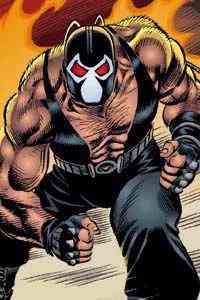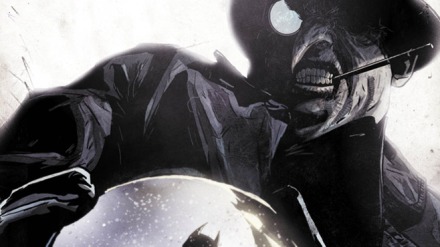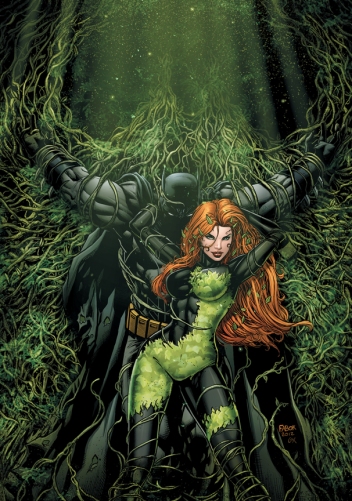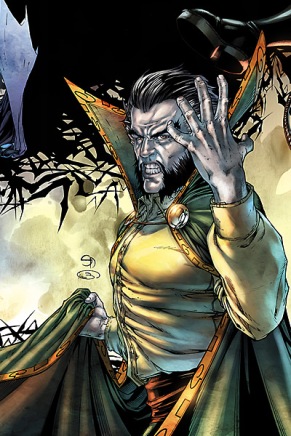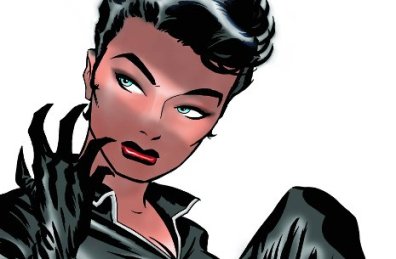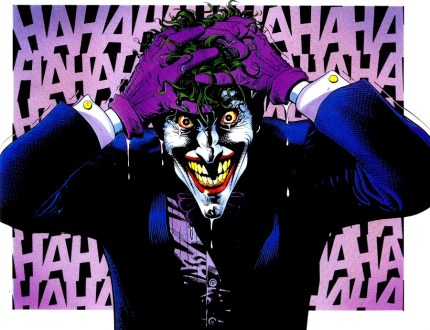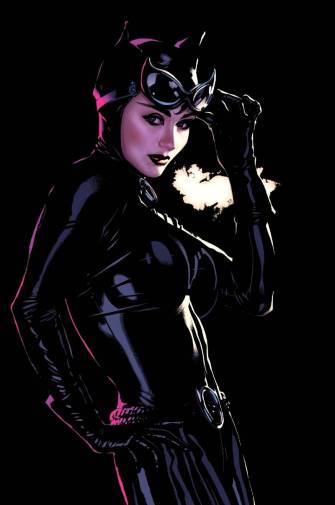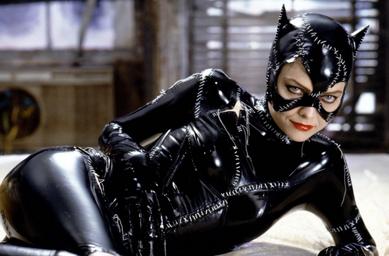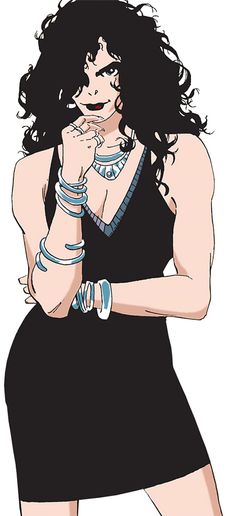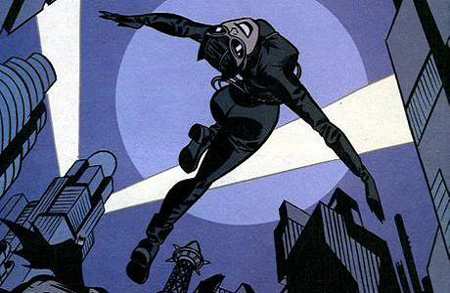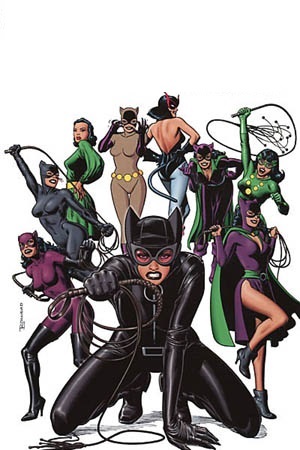The Top 12 Batman Villains
Batman is one of the longest running characters in the history of comics, and there are many reasons why he has been so successful. One of the main reasons is that he has, without reasonable debate, the best rogues gallery of any superhero. Here, I’m counting down my Top Twelve Batman Villains, based on a combination of factors such as quality of the character, their presence in popular culture, and personal preference. But the main determining factor was “how well does this villain work in contrast to Batman?” A strong protagonist-antagonist relationship is one that helps both characters come out looking better at the end of the day.
#12. Clayface (Basil Karlo/Matt Hagen)
Choosing the #12 spot was not easy, and basically boiled down to personal preference. Other characters that were considered include Killer Croc, Mr. Zsasz, The Red Hood, Man-Bat and Black Mask. But there’s something about Clayface that just speaks to me as a reader. I am a fan of monsters (think Frankenstein and the Wolfman) and I also enjoy villains who have a tragic backstory that makes me feel for them. Clayface fits both of these bills nicely. While the original Clayface was simply an actor named Basil Karlo who used make-up to make his face look however he wanted, the Clayface most people recognized was Matt Hagen, a treasure hunter who turns into a massive shapeshifting blob of mud. My favorite interpretation of the character is from Batman: The Animated Series, where Hagen’s name and powers are used, but he is given Basil Karlo’s backstory. Clayface is also a rare Batman villain who can challenge him physically, adding an extra element of danger to stories involving him.
#12 spot was not easy, and basically boiled down to personal preference. Other characters that were considered include Killer Croc, Mr. Zsasz, The Red Hood, Man-Bat and Black Mask. But there’s something about Clayface that just speaks to me as a reader. I am a fan of monsters (think Frankenstein and the Wolfman) and I also enjoy villains who have a tragic backstory that makes me feel for them. Clayface fits both of these bills nicely. While the original Clayface was simply an actor named Basil Karlo who used make-up to make his face look however he wanted, the Clayface most people recognized was Matt Hagen, a treasure hunter who turns into a massive shapeshifting blob of mud. My favorite interpretation of the character is from Batman: The Animated Series, where Hagen’s name and powers are used, but he is given Basil Karlo’s backstory. Clayface is also a rare Batman villain who can challenge him physically, adding an extra element of danger to stories involving him.
#11. Mr. Freeze (Victor Fries)
Very few Batman villains benefitted more from Batman: The Animated Series than Dr. Victor Fries, a scientist who suffers through a horrific accident that turns him into a being that has to stay at zero degrees in order to survive. Taking on the alias of Mr. Freeze, Victor creates a survival suit and a cold gun capable of rapidly freezing anything to terrorize the people who ruined his life. Originally a one-note character from the Silver Age named Mr. Zero, the television show fleshed out the character and in turn made him one of the most sympathetic bad guys of all time. In addition to his accident, it was revealed that Victor’s primary motivation for his crimes was to raise money to save the life of his wife Nora, the victim of a rare disease. To save her life, he had her chryogenically frozen, only to be made into a monster by those same chemicals. He is a villain motivated by love and loss; in many ways, a representation of what Batman could become if he allowed his emotions to cloud his judgment.
his judgment.
#10. Harley Quinn (Harleen Quinzel)
Almost from the moment she arrived on our television screens as The Joker’s perky but psychotic girlfriend, Harley Quinn started accumulating a fanbase that has turned her into one of DC’s most successful marketing machines despite only being around for about two decades. Funny, dorky, and more than a bit off of her rocker, Harley brought a new layer to The Joker but more impressively carved a niche for herself. Her mad, inexplicable love for the madman allowed DC to explore an emotionally and physically abusive relationship in a complex way, something that I am sure has contributed to Harley’s popularity. The reason she is low on the list is that she very quickly became an anti-hero because of how easy she is to root for, and because ultimately, she’s not that much of a Batman villain. She’s gone up against the Bat a couple of times, but she is mostly a character that contrasts with The Joker and more importantly, a compelling character in her own right.
#9. The Riddler (Edward Nigma)
Conundrums and puzzles are obsession of Edward Nigma, perhaps the smartest idiot in the DC universe. Intellectually superior to most, his narcissism compels him to leave clues to his crimes in the forms of riddles. While he is smart enough to fool the Gotham Police most of the time, he is rarely ever a match for Batman. While not a physical threat, Riddler is perhaps the best villain for one of the most important roles that Batman plays; the Detective. Requiring an intelligent and creative writer in order to use effectively, Riddler is somewhat underutilized but still has a place among Batman’s greatest rogues because when he’s done right, he’s just a brilliantly entertaining character. I also think readers identify with him as he tries to think of a problem that Batman cannot solve.
#8. Bane
Bane was one of the hottest villains in comics when I was a child; the brand new menace to Batman who was both a mental and physical threat. Bane’s greatest story was his debut story; a brilliant strategist with a burning hatred of Batman, he planned a massive escape from Arkham Asylum that stretched the Batman to his absolute limits as he battled every major foe he’d ever been put up against. Knowing that Batman was Bruce Wayne, Bane waited until he was was physically exhausted before assualting him in his home, breaking Batman’s back in one of the most famous Batman moments ever. While his intelligence and physical skills are already impressive, Bane’s most unique source of power is “Venom”, a unique blend of steroids that exponentially increases his strength. While there aren’t many great Bane stories aside from that debut, he made an incredible first impression and dominated Batman comics for the better part of two years.
#7. Two-Face (Harvey Dent)
Harvey Dent was once the handsome, noble and popular District Attourney of Gotham City, one of Batman’s strongest allies in his fight against crime. However, Harvey carried a dark secrect, a dual personality that was one of the most sadistic men in Gotham. When a vat of acid was thrown in his face during a trial, Harvey was left physically scarred on the left side of his face and his personality was split down the middle. A criminal mastermind whose every deed, good or ill, is determined by the flip of a two-headed silver dollar, Two-Face is an interesting look at duality. He was a noble man on a crusade for justice, much like Batman, but one bad day turned him into a monster, albeit one who still occasionally acts on the side of good when his better nature wins out. I think the story of how Harvey becomes Two-Face will always be a compelling tragedy, but I do think that the villain only has a limited amount of use after that point.
#6. The Penguin (Oswald Cobblepott)
While most of Batman’s rogues serve as twisted reflections against Batman, Oswald Cobblepott is more of a dark reflection of Bruce Wayne. Born poor and ugly but determined to improve his lot in life, the man who would come to be called The Penguin fought his way through Gotham’s criminal element to become one of the most influential crime lords in Gotham. Known for having an element of class but also ruthless cruelty, Cobblepott is kind of Batman’s version of Lex Luthor; more interesting as a guy that Bruce can never quite put away but is always fighting against. He’s also an interesting example of how a character can have a sympathetic backstory without being sympathetic; he’s a cruel, heartless man and I love him for it.
#5. Poison Ivy (Pamela isley)
Poison Ivy is probably my second favorite Batman villain, a femme fatale who is one of the most powerful female villains in comics. Possessing the ability to manipulate plant life to her will and also producing deadly toxin through her lips and pheramones that no man (or woman) can resist, Pamela Lillian Isley is truly a beautiful nightmare. She’s also a great analysis of extremism; Bruce Wayne is not unsympathetic to taking care of the environment, but Ivy values the lives of plants more than people. Ivy just stands out as a unique character in the Batman pantheon and I think that’s what draws me to her; she’s different and fantasticly so.
#4. Ra’s al Ghul
Ra’s al Ghul is the Moriarty to Batman’s Sherlock Holmes, a brilliant man with a twisted sense of morality who wants to remold the world into one that fits his vision of perfection. Nearly immortal thanks to numerous baths in mystical pools called Lazarus Pits, Ra’s possesses near infinite resources and limitless ambition. While he views Batman as his rival, he also views him as his equal and would like to sway to his point of view, inheriting the earth as the bride of his daughter Talia. Ra’s is a character that I’ve personally never been fond of, but I respect that he is a great concept for a villain and has been a part of some of Batman’s best stories.
#3. Catwoman (Selina Kyle)
I debated whether to put Selina on this list at all, since she is less of a villain these days and more of an anti-hero; however, I think that her role as an antagonist to Batman is a crucial element to the character that can’t be ignored. If nothing else, she is one of the most essential characters to the Batman mythology, giving the character a gray area of morality in a world where most people are either wholly good or wholly evil. Selina is a little of both. Catwoman is one of the greatest comic book characters of all time, and one of my favorites, but when it comes to the best Batman rogues, two men are superior foes in my opinion.
#2. Scarecrow (Jonathan Crane)
Scarecrow is my favorite Batman villain and it really isn’t close. The master of fear is perhaps the truest dark reflection of Batman; both men use fear as a weapon, but Crane uses it against the innocent. He is the one preying on the fearful, and that makes him the perfect antagonist for Batman. One of the reasons that Scarecrow is one of my favorites is that his character is unsettling and terrifying psychologically, not just physically. This is a man who enjoys to torture people through horror, and often targets children. And what’s perhaps scariest is that Jonathan Crane is not psychotic or even sociopathic. He has a full grasp on what he is doing, but does it deliberately. He is just a screwed-up, evil human being.
#1. The Joker
The Clown Prince of Crime is Batman’s greatest nemesis, a ruthless psychotic monster obsessed with killing Batman and willing to go to any means necessary to do it. If you want to know how screwed up of a place Gotham City is, the greatest hero is a man who dresses like a demon and the most vile terrorist is a man dressed as a clown. Batman is stoic, The Joker is always laughing. They play off each other perfectly because they have absolutely nothing in common, except that they will never budge. Joker is also one of the all-time greats because he is incredibly versatile as a character; he can be an almost harmless trickster suitable for children’s television, or a deranged lunatic that is one of the great cinematic villains in history in Chris Nolan’s The Dark Knight. The fact that both versions of those character feel completely true to the Joker character is a testament to how perfect he is an archetype and how effective the rivalry is. He is the obvious choice for the top spot.
